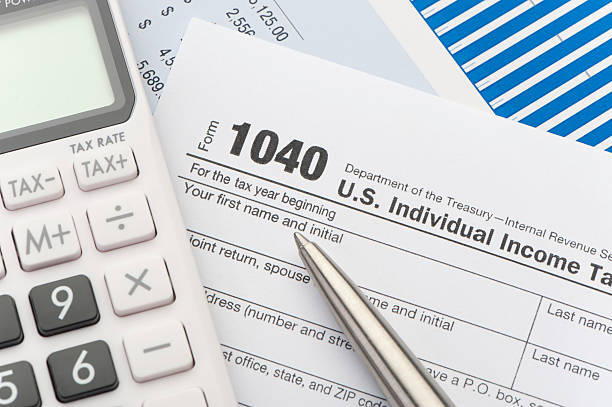Debt Ceiling , Regulatory Issues
Why Is the United States’ Debt Ceiling So Important to the Economy?

The debt ceiling, or debt limit, of the United States is an important tool used by the U.S. Treasury Department to ascertain how much money the department can borrow in order to pay weekly or monthly bills for the federal government.
Today, the accountants at Whitlock look at why the United States’ debt ceiling is so important to the economy.
Related Post: Are Valuation Discounts on the Chopping Block?
What is the amount of debt the U.S. owes its creditors?
As of Oct. 1, 2021, the United States national debt was $28.8 trillion. By comparison, the annual GDP of the United States is $20.935 trillion. The national debt has accumulated ever since 1790, particularly during times of war and economic stress when government spending increases.
What does the U.S. debt go towards?
The debt of the United States is essential to daily operations. For example, this debt goes to pay salaries of federal employees, distribute Social Security and Medicare benefits, issue tax refunds, cash in older debt such as Savings Bonds or Treasury Bonds, and disburse any payments the federal government must make.
The federal debt is vital to its daily operations because without it, people would not receive their money.
How does the United States issue debt?
The U.S. Treasury sells and auctions several securities, such as bonds, that anyone can purchase. The proceeds pay for government operations in the short term. When the bonds mature, the Treasury pays back the investment with interest. Part of the proceeds from the sales of bonds goes towards paying interest on securities that have matured in addition to paying the aforementioned benefits.
What is the debt ceiling?
The debt ceiling is a Congressionally-mandated limit of the amount of debt the U.S. Treasury can borrow to meet the federal government’s legal obligations. The statutory debt limit is currently set at $28.5 trillion, and the government reached that limit on August 1, 2021, according to the Government Accounting Office.
How has the government avoided hitting the debt ceiling?
The treasury can undertake several measures to keep the government in operation once it reaches this limit, but these are just temporary measures. This has been the operating principle of the Treasury since this summer at the end of July.
The Treasury had $850 billion in cash at the end of June 2021, coming from a mixture of tax collection, security auctions, and trust fund investments, notes the nonpartisan Congressional Budget Office.
As the Treasury uses its cash on hand to pay debts, that cash will deplete at some point until and unless Congress authorizes increasing the debt limit. This means the government won’t be able to pay its obligations because it can’t issue more debt until it’s authorized by lawmakers.
Why can’t the Treasury Department just issue more debt or print more money?
Congress has the sole authority to delineate how much money the federal government can spend, as outlined in the U.S. Constitution’s Appropriations Clause.
What happens when the government can’t pay its debts?
Over the course of a month, tens of billions of dollars will not go towards several segments of the economy.
- Around $35 billion in payments to Medicare at the first of the month.
- More than $82 billion of Social Security payments to recipients made every week for four weeks.
- $25 billion in payments to active-duty military members and benefits to retired veterans as well as Supplemental Security Income.
- Pay for federal employees.
- Interest payments made on U.S. debt.
- More than $142 billion in economic activity would stop.
Economic activity in the United States would slow down in the coming weeks as some segments of the population have less money to spend, which could affect consumer purchases and the retail industry.
What happens if the government doesn’t increase the debt limit?
A few weeks into this hypothetical scenario, federal spending may have to be cut by as much as 40 percent until the Treasury receives enough money from taxes to make payments, notes the nonpartisan Brookings Institution.
Not raising the debt ceiling doesn’t mean the government comes to a halt. It simply means the government may delay how it operates until a solution is found. Financial markets and investors might question America’s economic stability and pull out of the government bond market until Congress acts, and stock markets may take a hit due to economic uncertainty, according to Bankrate.
Related Post: Congressional Tax Writers Take Up Reform Proposals
Contact Whitlock Today for More Answers
Do you have questions about your company’s economic future? Need help with some solid business planning? Are you a high net-worth individual looking for sound investment advice? The CPAs and business advisors at Whitlock can help. Contact us for more information. We have offices in Kansas City, Springfield, and Joplin in Missouri.

View Similar Blogs
Other blogs about cybersecurity and your business

How to Minimize Tax Liability: Practical Strategies for Individuals and Businesses
When it comes to financial planning, one of the most effective ways to protect your income and assets is by understanding how to minimize your tax liability. Whether you’re a business owner or an...
Congress Passes Landmark Tax Legislation: What the New Bill Means for You
On July 3, 2025, Congress passed the most sweeping tax legislation since 2017. Known unofficially as the One Big Beautiful Bill Act, this new reconciliation bill permanently extends key elements of...
Our Cost Accounting Services and How They Lead to Actionable Profit Strategies
Do you understand how costs affect your business strategy? Whitlock. leverages our cost accounting expertise to help you analyze expenses. We give you the data you need to make growth-centric...

